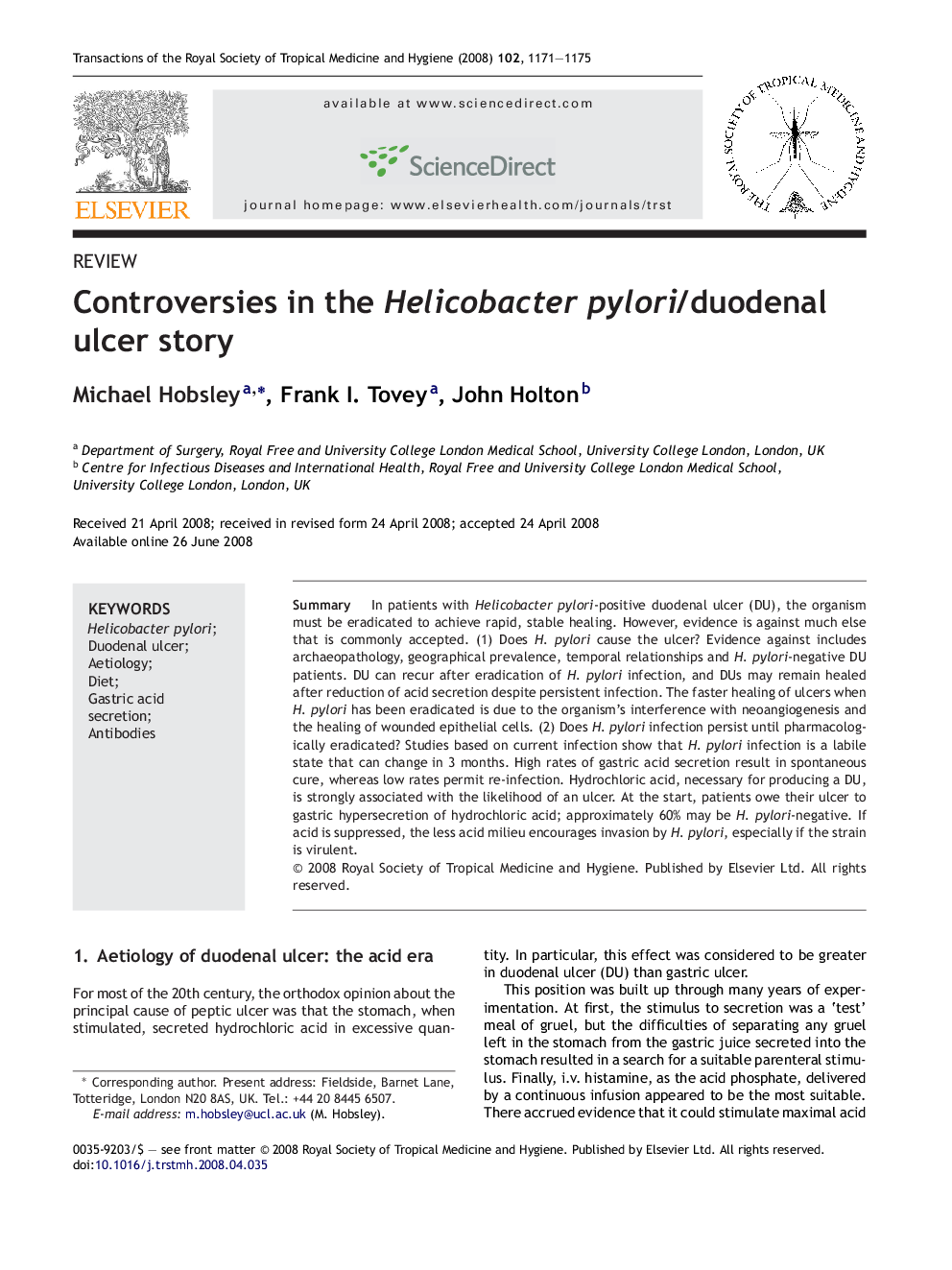| Article ID | Journal | Published Year | Pages | File Type |
|---|---|---|---|---|
| 3421284 | Transactions of the Royal Society of Tropical Medicine and Hygiene | 2008 | 5 Pages |
Abstract
In patients with Helicobacter pylori-positive duodenal ulcer (DU), the organism must be eradicated to achieve rapid, stable healing. However, evidence is against much else that is commonly accepted. (1) Does H. pylori cause the ulcer? Evidence against includes archaeopathology, geographical prevalence, temporal relationships and H. pylori-negative DU patients. DU can recur after eradication of H. pylori infection, and DUs may remain healed after reduction of acid secretion despite persistent infection. The faster healing of ulcers when H. pylori has been eradicated is due to the organism's interference with neoangiogenesis and the healing of wounded epithelial cells. (2) Does H. pylori infection persist until pharmacologically eradicated? Studies based on current infection show that H. pylori infection is a labile state that can change in 3 months. High rates of gastric acid secretion result in spontaneous cure, whereas low rates permit re-infection. Hydrochloric acid, necessary for producing a DU, is strongly associated with the likelihood of an ulcer. At the start, patients owe their ulcer to gastric hypersecretion of hydrochloric acid; approximately 60% may be H. pylori-negative. If acid is suppressed, the less acid milieu encourages invasion by H. pylori, especially if the strain is virulent.
Related Topics
Life Sciences
Immunology and Microbiology
Applied Microbiology and Biotechnology
Authors
Michael Hobsley, Frank I. Tovey, John Holton,
